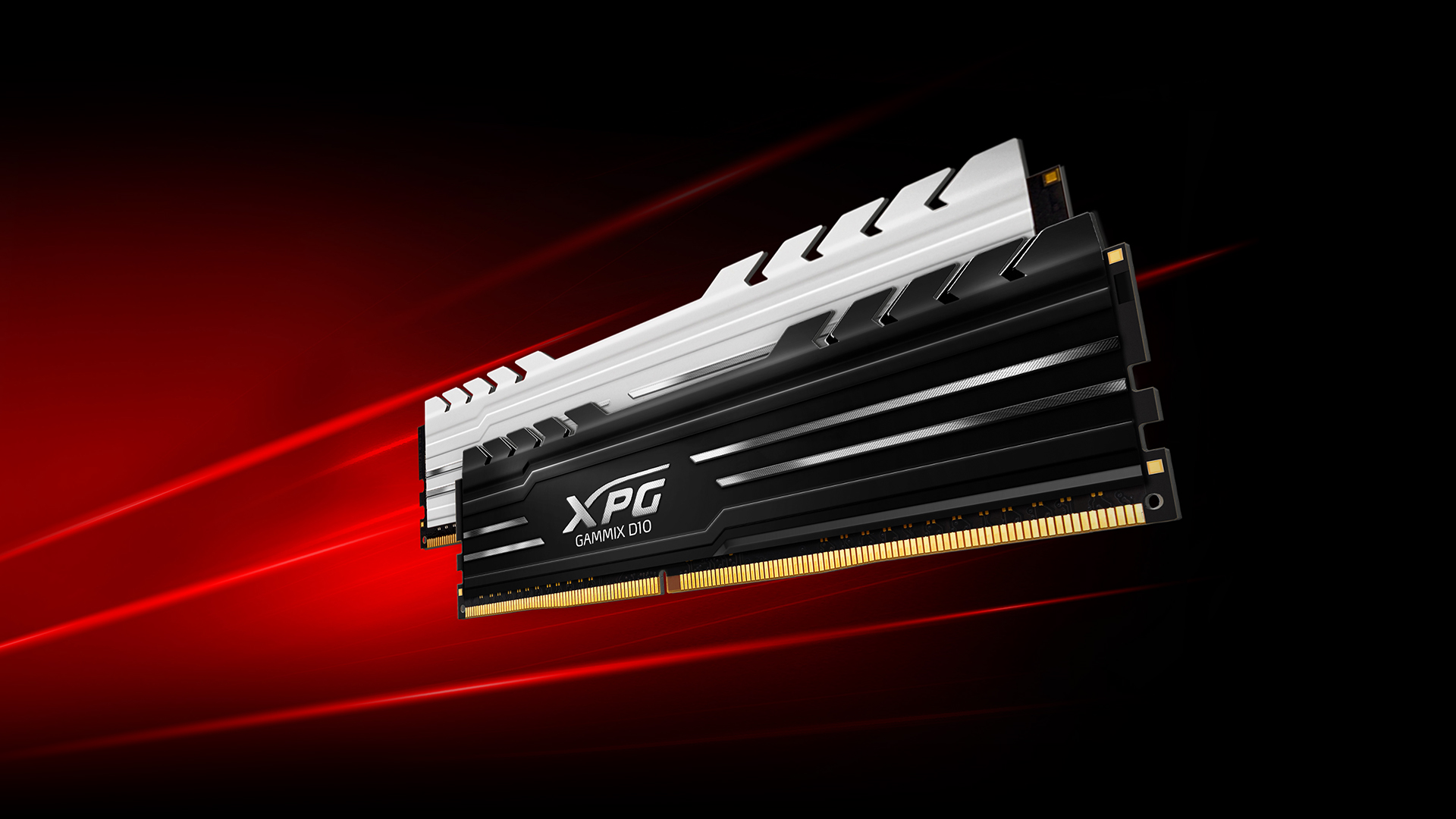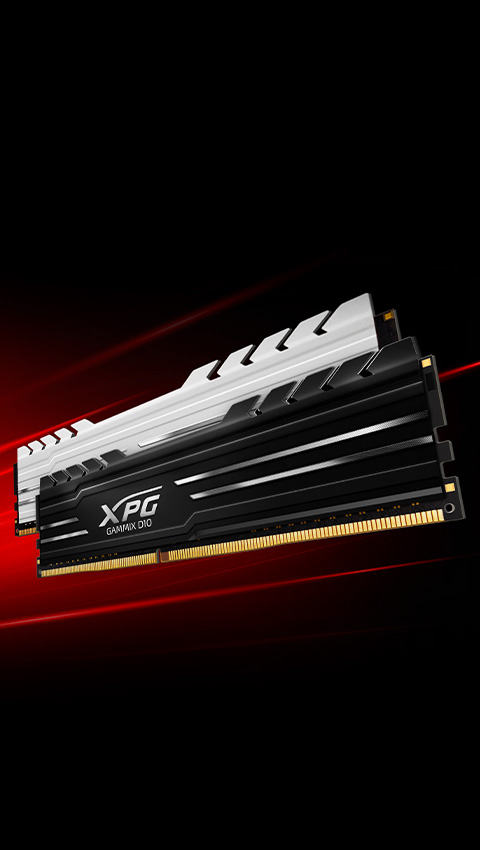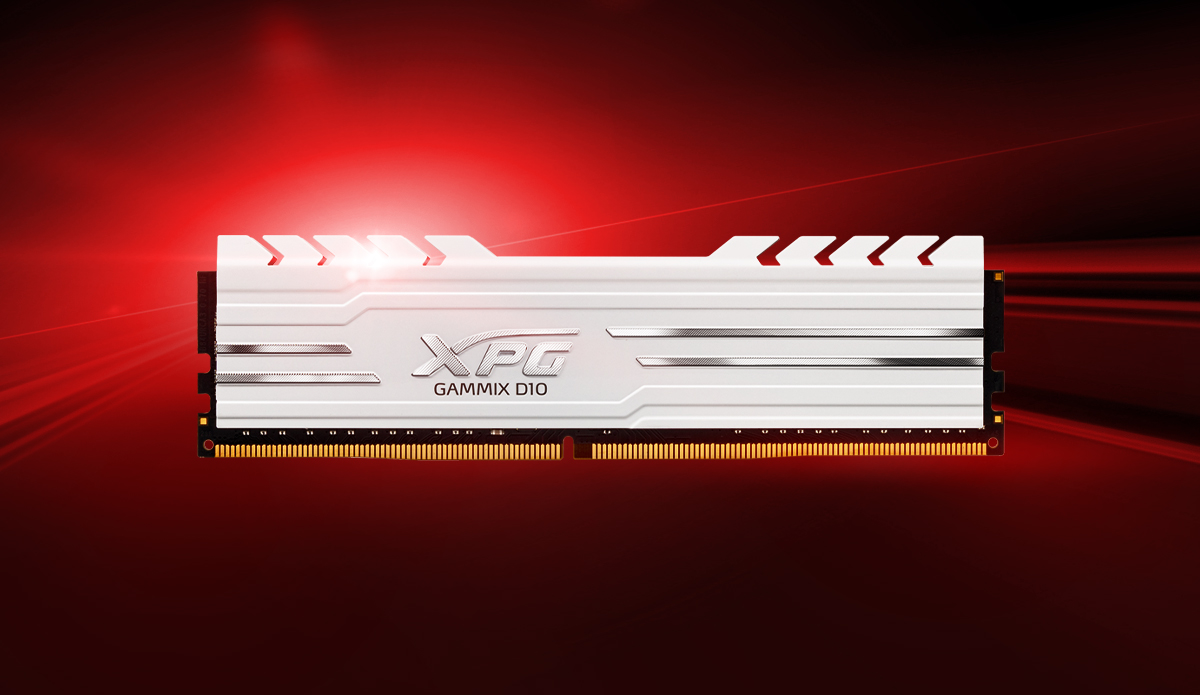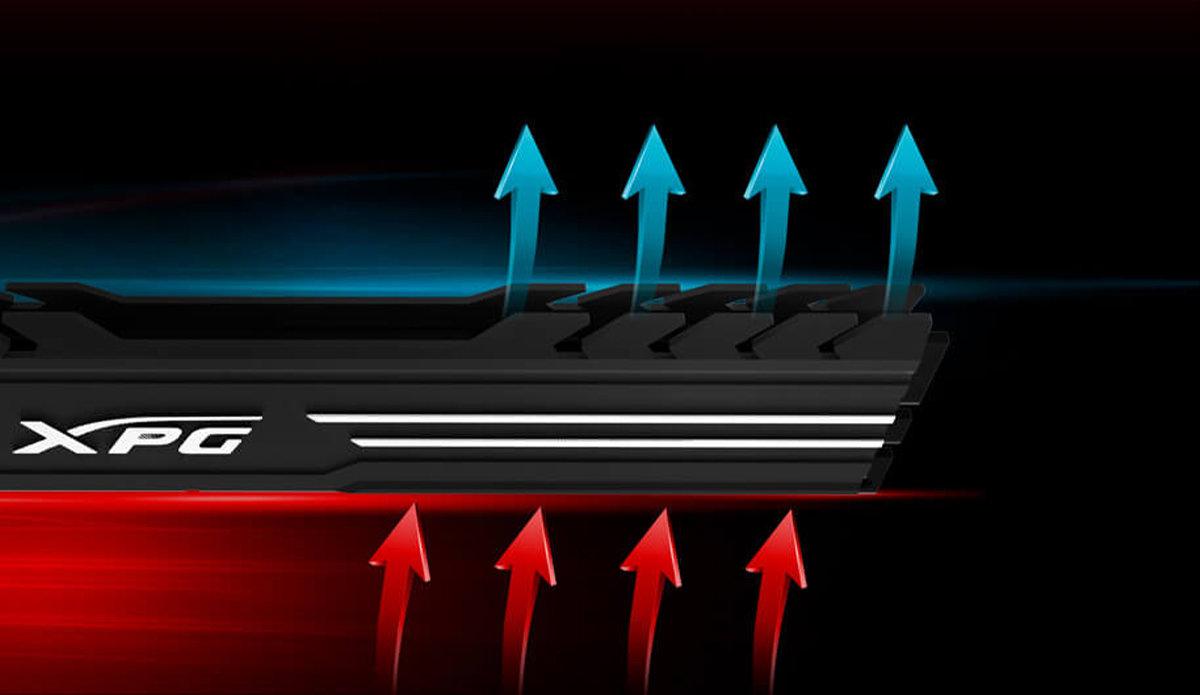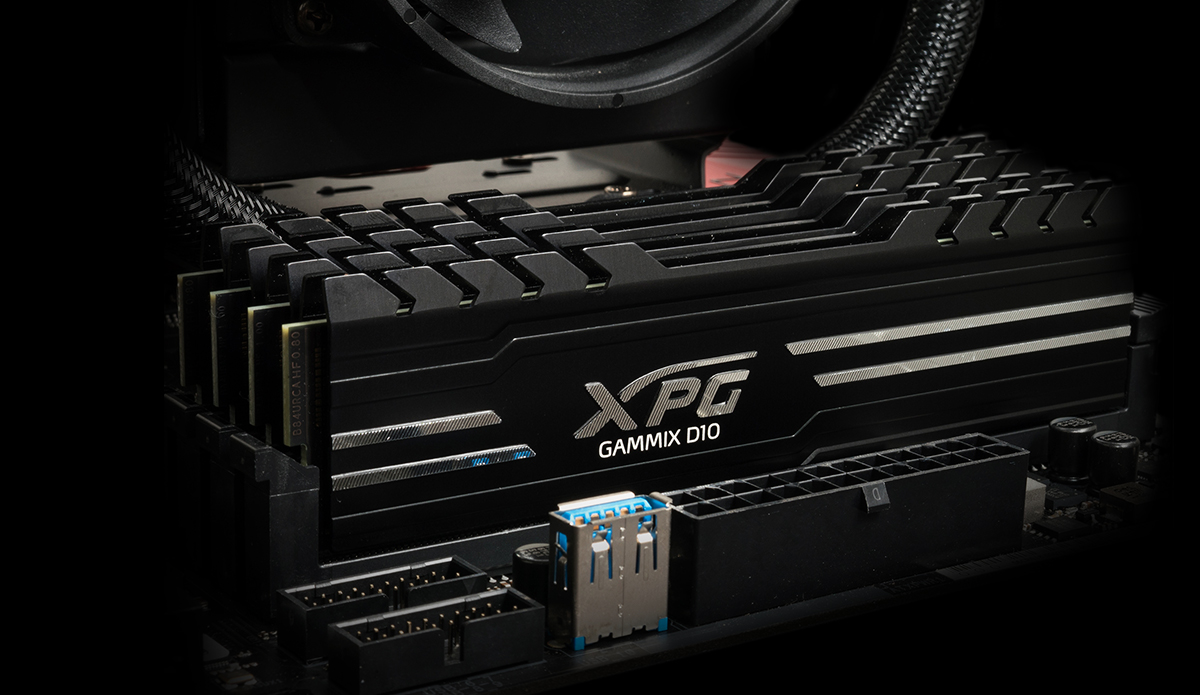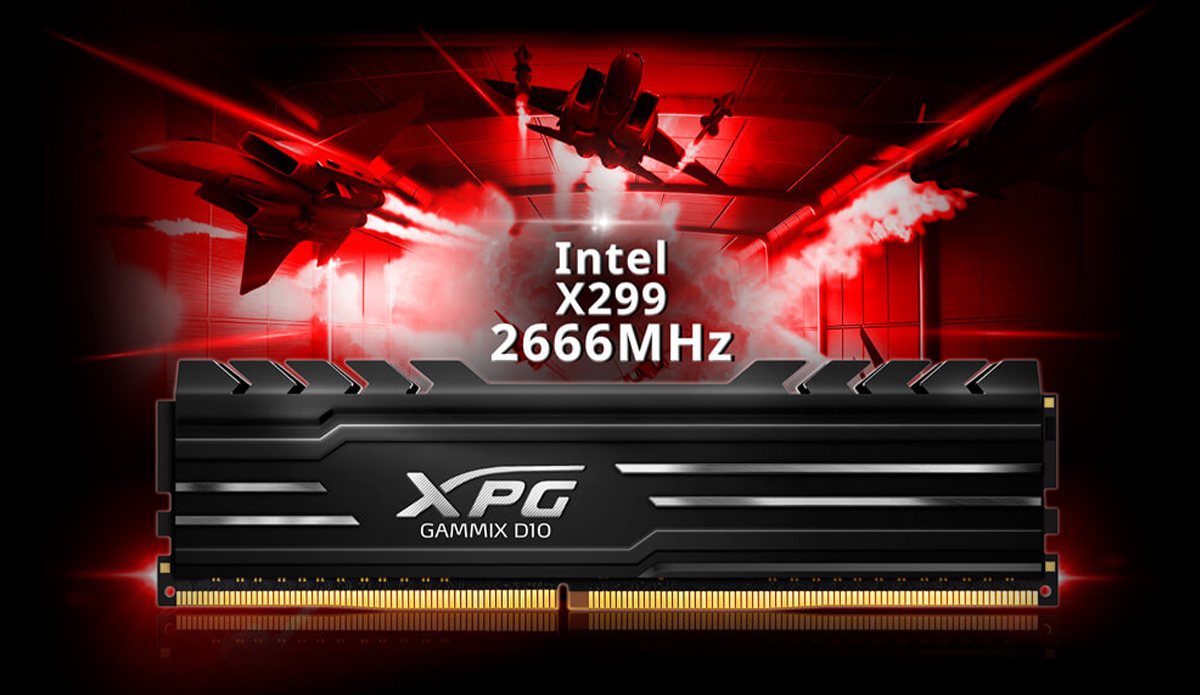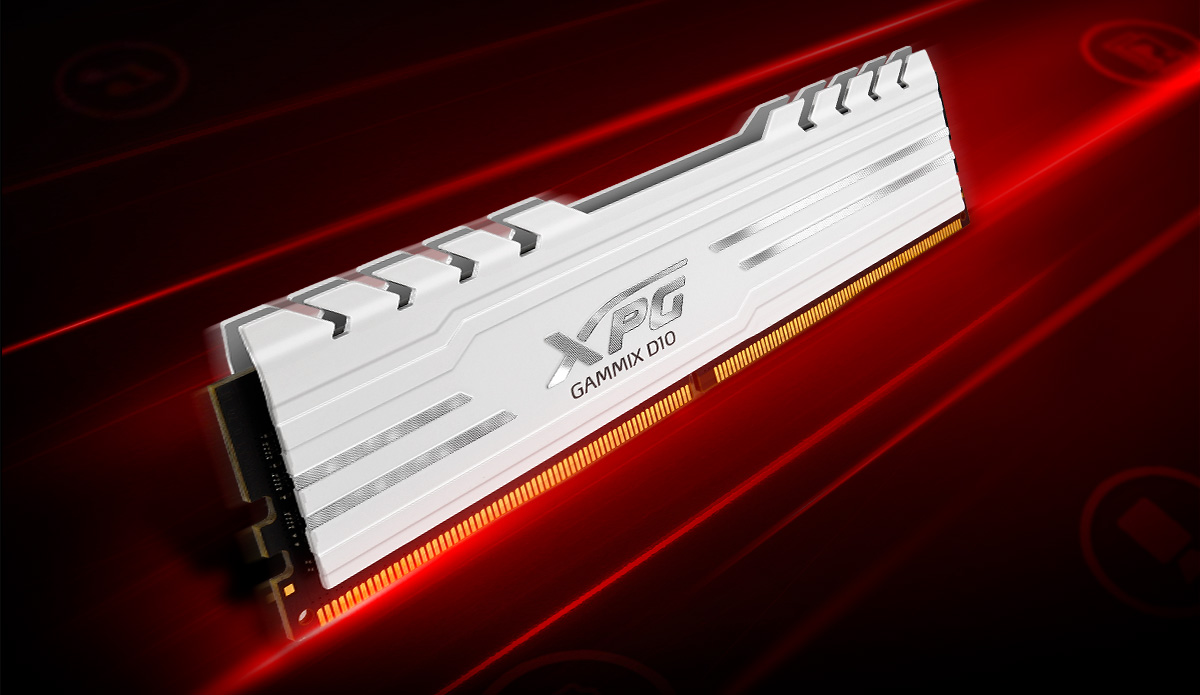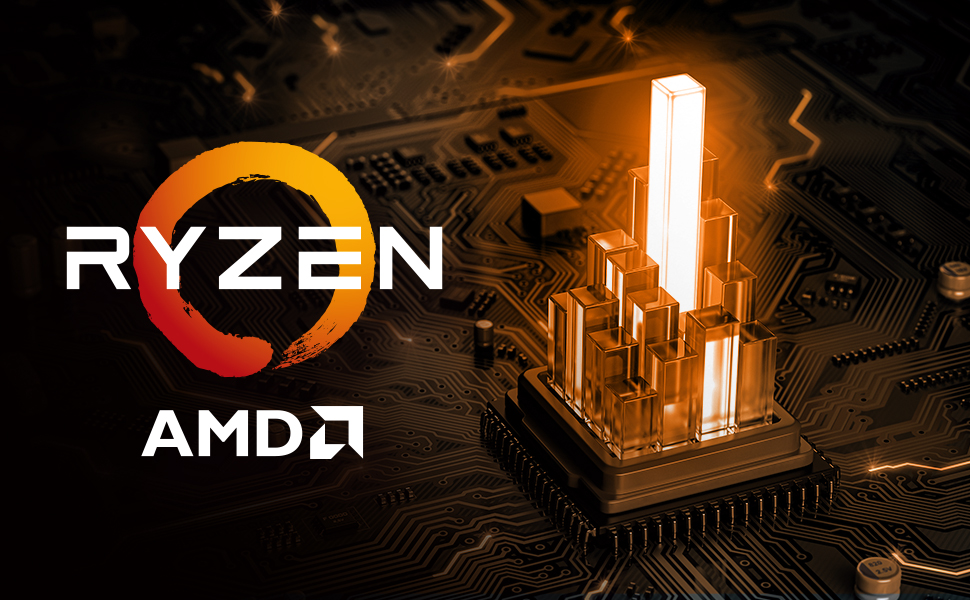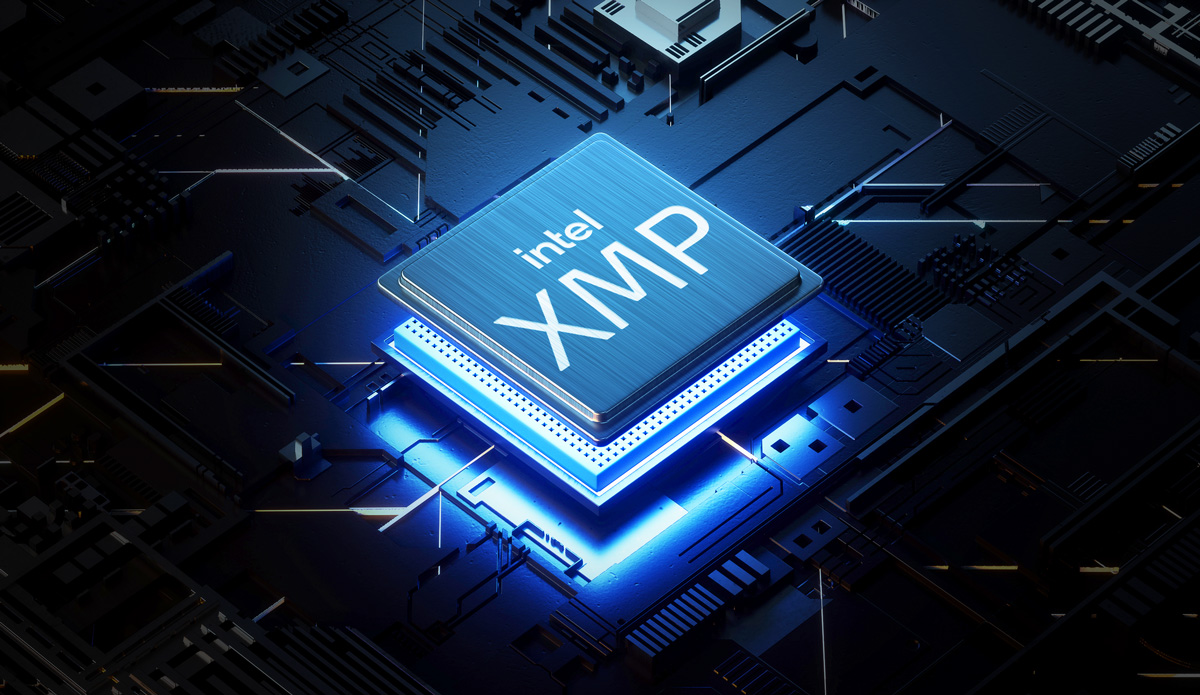XPG GAMMIX D10 DDR4 memory modules are designed for gamers and PC enthusiasts with support for new Intel X299 plus SPD 2666MHz implementation, with factory speeds up to 3600MHz out the box. With high-quality PCBs, D10 improves signal transfer quality and maintains stable operation at all times. It also supports Intel XMP 2.0 for quicker and safer overclocking.
● Open top heat shield for better dissipation
● Serrated heatsink with silver stripes simply makes your system look cool
Thanks to D10 having a low profile design, it can be easily installed even in small cases with limited space.
GAMMIX D10 supports the new Intel X299 platform and implements SPD 2666MHz. Operating voltage is 1.2V compared to 1.5V on older DDR3, which is a 20% reduction in power draw. This keeps systems cooler, more stable, and more energy efficient. GAMMIX D10 overclocks superbly at just 1.35V, achieving much higher clock frequencies than DDR3 to easily reach 3600MHz from the factory - with more potential available to dedicated overclockers.
For PC enthusiasts and gamers, good system stability really matters, so GAMMIX D10 features high-quality PCBs to improve signal transfer quality and maintain great stability even if the system operates at high speeds or is taking on heavy multitasking.
ADATA memory have been tested and verified to work with the latest AMD platforms for hassle-free compatibility and excellent overclocking performance.
* For more details about compatibility, please visit https://www.amd.com/en/products/ryzen-compatible-memory
Intel® Extreme Memory Profile (XMP) 2.0 makes overclocking a snap and enhances system stability. Instead of adjusting individual parameters in BIOS, you can do it right through your PC's operating system.
